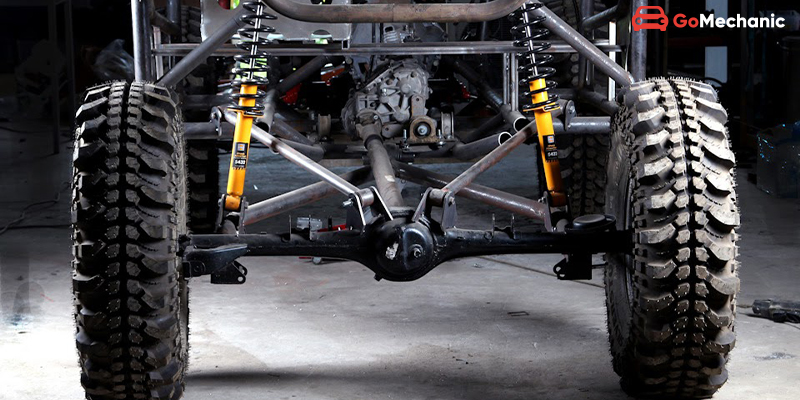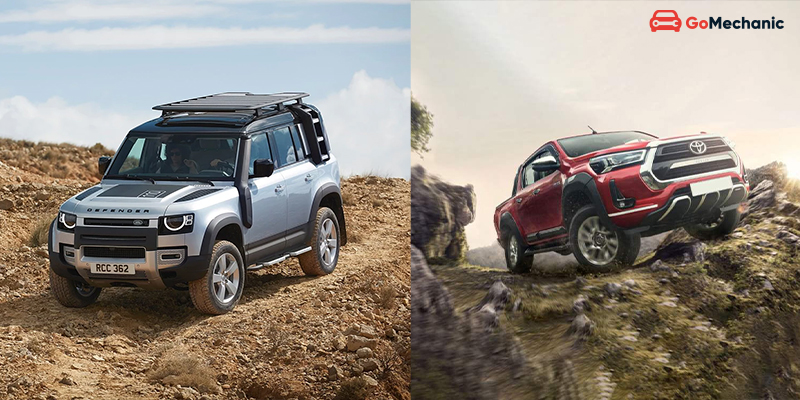Off-roading is more than just driving; it’s an adventure where every bump, dip, and incline is part of the thrill. But to truly master off-road adventures, you need more than just a rugged vehicle. Your suspension system plays a crucial role in handling rough terrains and ensuring a smooth ride. In this guide, we’ll delve into the world of suspension upgrades and maintenance, exploring how you can optimize your vehicle for the ultimate off-road experience.
Understanding Suspension Systems
The suspension system is responsible for providing a smooth and comfortable ride in a vehicle. It does this by absorbing the impact from bumps and irregularities on the road surface.
The main components are:
- Springs (coil, leaf, or torsion bar) – These absorb the energy from road bumps.
- Shock absorbers/dampers – These control the up-and-down movement of the springs, preventing excessive bouncing.
- Control arms and linkages – Connect the wheels to the vehicle body, allowing controlled movement.
There are two main types:
- Dependent suspension – The movement of one wheel affects the other on the same axle (e.g., leaf springs).
- Independent suspension – Each wheel moves independently, providing better handling and ride quality (e.g., MacPherson struts, double wishbones).
Proper maintenance of the suspension components is important for safety and comfort.
The Role of Suspension in Off-Road Performance

The suspension system plays a crucial role in off-road performance, as it is responsible for maintaining traction, control, and stability when driving over rough and uneven terrain.
- Ground Clearance: Off-road vehicles require high ground clearance to clear rocks, logs, and obstacles without getting stuck or damaged. Suspensions with longer travel and increased ride height provide the necessary ground clearance.
- Traction: Maintaining traction on loose surfaces like mud, sand, and gravel is crucial off-road. Suspensions with sufficient travel and flexibility keep wheels in contact with the ground, maximizing traction and preventing wheel spin or loss of control.
- Damping: Off-road driving causes intense impacts and jarring motions. Properly tuned shock absorbers control these movements and prevent excessive bouncing, avoiding loss of control or vehicle damage.
- Adjustability: Many off-road vehicles have adjustable suspensions. Drivers can fine-tune ride height, spring rates, and damping for different terrains. This adjustability ensures optimal off-road performance and handling.
- Durability: Off-road driving stresses suspension components with extreme forces and impacts. Heavy-duty components like reinforced control arms, bushings, and shock absorbers are necessary to withstand rigorous off-road use.
- Weight Distribution: Proper weight distribution is crucial for off-road traction, stability, and handling. Suspension designs optimize weight balance over all four wheels, improving off-road capability.
Signs Your Suspension Needs Attention/ Importance of Regular Inspections
- Uneven Tire Wear: Regular inspections can catch uneven tire wear early, indicating potential suspension issues. Addressing these issues promptly through inspections can prevent further damage to tires and suspension components, ensuring safety and extending the lifespan of your vehicle.
- Bumpy Ride: If you experience a rougher ride than usual, it’s a sign that your suspension system may need attention. Regular inspections help detect and address problems such as worn-out shocks or struts, ensuring a smoother and more comfortable driving experience while preserving vehicle performance.
- Nose Dive or Rear Squat During Braking/Acceleration: Observing a nose dive or rear squat during braking or acceleration suggests possible suspension issues. Regular inspections help maintain stability and control, which is crucial for safe driving and compliance with regulations.
- Excessive Bouncing: Experiencing excessive bouncing after hitting bumps indicates worn-out suspension components. Regular inspections enable early detection of these issues, preventing costly repairs and ensuring optimal vehicle performance and safety.
- Swerving or Drifting During Turns: Swerving or drifting during turns signals instability in the suspension system. Regular inspections help identify and rectify such issues, enhancing vehicle handling and preserving resale value.
- Knocking or Clunking Noises: Strange noises over bumps or rough roads may indicate suspension problems. Regular inspections allow for timely identification and repair of these issues, promoting safety, comfort, and compliance with legal requirements.
- Visible Damage or Leaks: Regular inspections help spot visible damage or leaks in the suspension system. Addressing these issues promptly ensures safety, prevents further damage, and extends the lifespan of suspension components, ultimately saving you money and preserving your vehicle’s value.
Suspension Upgrade Options and Considerations

Types of Suspension
- Performance Shocks/Struts: Upgrade to high-performance shocks for better damping and ride control.
- Control Arms: Upgrade to lightweight, durable control arms for improved suspension geometry and responsiveness.
- Air Suspension Systems: Consider air springs for adjustable ride height and smoother ride quality.
- Lift Kits: Install lift kits for additional ground clearance and off-road capability.
- Electronic Suspension Systems: Upgrade to electronic systems for adaptive damping and ride height adjustments.
- How long do suspension upgrades typically last? The lifespan of suspension upgrades varies depending on factors like driving habits, terrain, and quality of components. On average, well-maintained upgrades can last several years before requiring replacement.
- Choosing the Right Suspension Setup: When it comes to suspension setups, one size does not fit all. Factors like vehicle weight, intended use, and budget all play a role in determining the ideal suspension configuration for your needs. Whether you opt for a soft, plush ride or a stiffer, more responsive setup, prioritize compatibility and performance.
Top 10 Off-Road Cars
Here are the top 10 off-road cars:
- Ford Bronco
- Jeep Wrangler
- Land Rover Defender
- Toyota 4Runner
- Lexus LX
- Mercedes-Benz G-Class
- Jeep Gladiator
- Chevrolet Colorado ZR2
- Toyota Tacoma TRD Pro
- Nissan Frontier Pro-4X
These vehicles are equipped with robust four-wheel-drive systems, high ground clearance, and advanced off-road technologies, making them capable of tackling challenging terrains. The Ford Bronco, Jeep Wrangler, and Land Rover Defender are iconic off-road vehicles known for their exceptional off-road capabilities and customization options.
The Toyota 4Runner, Lexus LX, and Mercedes-Benz G-Class are luxury off-road SUVs that combine off-road prowess with premium features and comfort. The Jeep Gladiator, Chevrolet Colorado ZR2, Toyota Tacoma TRD Pro, and Nissan Frontier Pro-4X are midsize pickup trucks designed for off-road adventures, offering a combination of utility and off-road performance.
These vehicles are equipped with features such as four-wheel-drive systems, locking differentials, skid plates, off-road suspension setups, and advanced traction control systems, enabling them to navigate through mud, rocks, and uneven terrain with ease.
Maintenance Practices for Off-Road Suspension Systems
- Regular inspections: Check for wear, damage, and leaks.
- Shock absorber maintenance: Replace worn shocks and check for leaks.
- Lubrication: Keep pivot points lubricated for smooth operation.
- Tire rotation and alignment: Ensure even wear and proper alignment.
- Spring inspection: Look for cracks, breaks, or sagging.
- Cleaning: Remove mud and debris to prevent corrosion.
- Tightness checks: Retorque mounting bolts regularly.
- Fluid level checks: Maintain recommended fluid levels.
- Replace worn components promptly.
- Professional inspections: Have your system checked after demanding drives.
Tools Needed for Suspension Work
- Jack and Jack Stand: You’ll need a sturdy jack and jack stand to safely lift and support your vehicle while working on the suspension.
- Torque wrench: A torque wrench is crucial for tightening suspension components to the proper specifications, preventing over-tightening or under-tightening.
- Socket and wrench set: A comprehensive set of sockets and wrenches (both standard and metric) is necessary for removing and installing suspension components.
- Pry bars: Pry bars can help separate stuck or seized components, such as ball joints or control arm bushings.
- Hammer: A rubber mallet or dead-blow hammer may be needed to dislodge stuck components or assist in disassembly.
- Grease gun: A grease gun is essential for lubricating bushings, ball joints, and other suspension pivot points during maintenance or reassembly.
- Spring compressors: If you’re working on coil springs, spring compressors are required to safely compress the springs for removal and installation.
- Alignment tools: For adjusting camber, caster, and toe settings, you may need specialized alignment tools, such as turn plates, camber gauges, and toe plates.
- Brake caliper tool: A caliper tool or brake caliper hanger is useful for safely suspending the caliper and brake pads out of the way when working on suspension components.
- Safety equipment: Always wear proper safety gear, including safety glasses, gloves, and sturdy shoes, to protect yourself while working on suspension components.
Future Trends in Suspension Technology
- Adaptive and semi-active suspension systems that automatically adjust to driving conditions.
- Electro-hydraulic and electro-magnetic dampers for precise damping control.
- Air suspension with integrated ride-height adjustment capabilities.
- Predictive suspension using sensors to anticipate upcoming road conditions.
- Lightweight, high-strength materials for more efficient suspension components.
- Integration with autonomous driving and electric powertrains.
- Connected vehicle technology for real-time monitoring and over-the-air updates.
- User-customizable suspension settings based on preferences.
- Advanced simulation and virtual testing for quicker development.
- Continued focus on improving ride quality, handling, and overall performance.
Conclusion
Off-roading demands more than a rugged vehicle; it requires a finely tuned and well-maintained suspension system. This guide underscores the importance of proper suspension upgrades & maintenance for superior off-road performance, detailing the signs of wear, options for upgrades, and maintenance practices. By choosing the right suspension setup and adhering to regular inspections, enthusiasts can ensure their vehicle is equipped to handle the rigors of off-road adventures, combining safety, performance, and comfort for an unmatched driving experience.





